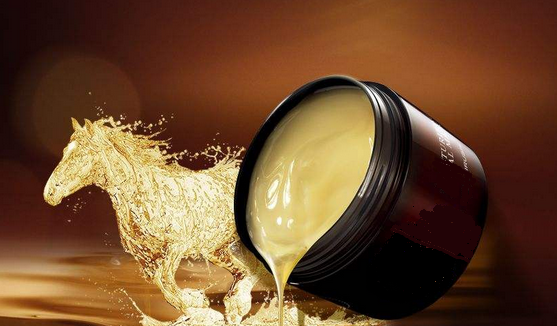Alias: ivory red, red years, Christmas flowers, orangutans
Family Genus: Euphorbiaceae
Morphological characteristics:
Poinsettia is an evergreen shrub.
Stems erect, with milk. Leaves alternate, ovate-elliptic, lower leaves green, upper leaf blade flaky, red. Inflorescences terminal.
Origin:
Native to Mexico, the countries around the world are widely cultivated, and both the north and south of China are also cultivated.
Habits:
Christmas flowers are in a sunny and warm climate. Potted plants require well-drained, loose, fertile sandy loam soil.
Reproduction method:
Poinsettia multiplication cutting propagation, generally combined with basin, pruning points in spring and autumn, the method is as follows: cutting cutting length l0 ~ 15cm (usually contains 3 ~ 4 bud eyes), remove the lower leaves, retain the upper 1 ~ 2 The leaves and incisions should be leveled. The top and bottom incisions should be smeared with grass and wood ash to stop the milk and insert into the washed and disinfected river sand, 4 to 5 cm deep. Then place the shade, regularly spray moisturizing, about 20 days to root, the survival rate is higher.
Cultivation Management:
Poinsettia has a more developed root system and should be changed once a year in the spring when the greenhouse is out. Poinsettia has high lightness and is not strict with the soil, but the drainage should be good, the basin soil is too dry, the leaf margin is prone to scorch, and if the water is too much, the leaves are soft and sagging. Therefore, in the summer rainy season, the water in the basin should be poured out in time. In the growing season, organic liquid fertilizer is mainly applied, and when the fertilizer is insufficient, the branches are thin and the leaves are yellow.
Poinsettia is a short-day plant. If it blooms on National Day, it should be treated with shading in mid-August. The sunshine duration is 8 to 10 hours per day for about 40 days. Poinsettias are strong in germination, so they are mainly cut with heavy shears. They try to make the plant shape low to facilitate indoor display and enhance the viewing effect. In the early stages of budding, branches that are robust and highly consistent (usually 3 to 5) should be selected and the rest should be erased. Prune before and after the beginning of autumn to control the height. If it blooms, the branches are still long. You can take plastic surgery for bending, the method is as follows: First, the water control of the plants, so that the branches become soft, so as not to break when bending. The bent branches can be tied to the base of the plant with brown silk or hooked into the soil with a thin wire. After about 10 days, they can be bent upwards and flattened.
Poinsettia is not tolerant to cold, before and after the frost fall into the greenhouse, the room temperature should be controlled at 15 ~ 25 °C, the light should be sufficient, ventilation should be good, the temperature is too low, all the leaves will curl, fall off.
Garden use:
Poinsettia red top piece can be from November to next March, red and green matched, especially pleasing, suitable for display in the hall, can also be arranged venue, and can be used for flower arrangements.
It can be planted in flower beds in the south, or it can be planted under the front window.
Common varieties are:
EckesWhite, sepals milky white.
A powder (Rosea), sepal pink.
Lutea, sepals pale yellow. Crimson poinsettias (Annette Hegg), sequins dark red.
Triploid Poinsettia (Eckespointc-1), sepals, leaf-shaped, bright red.
Double-petered poinsettia (Plenissima), green-leaved, sepal red, double-lobed.
Henrietta Ecke, bright red sepals, double flaps, flat outer cheeks, sequins upright, very beautiful.
Plenissima Eckes Flaming Sphere, red bloody bracts, double petals, bracts curled up and down into a spherical, slow growth.
Variegata, leaves pale gray-green, with white markings, bracts bright red.
Ms. Paul Ecke, leaf width, leafy, sepals blood red.
New varieties listed in recent years:
Festive red (Festival Red), dwarf, large sepals, bright red.
Petoy Red, sepals broad, dark red.
Success Red, leaf shape, sepals red.
Orange Red Lilo, large bracts, orange-red.
Pearl, bracts yellow-white.
Pichacho, dwarf species, dark green leaves, bracts deep red, no hormone treatment.
Products collected from living horses include mare's milk, used by people with large horse herds, such as the Mongols, who let it ferment to produce kumis. Horse blood was once used as food by the Mongols and other nomadic tribes, who found it a convenient source of nutrition when traveling. Drinking their own horses' blood allowed the Mongols to ride for extended periods of time without stopping to eat.The drug Premarin is a mixture of estrogens extracted from the urine of pregnant mares (pregnant mares' urine), and was previously a widely used drug for hormone replacement therapy.The tail hair of horses can be used for making bows for string instruments such as the violin, viola, cello, and double bass. They are also used
for shaving and cosmetics products. Tetanus vaccines are still made from
the blood of immunized horses.

Other Horse By Products,Horse Hair,Horse Hair for Wig,Horse Hair for String
Jiangxi Institute of Biological Products Inc. , https://www.jxinstitute.com